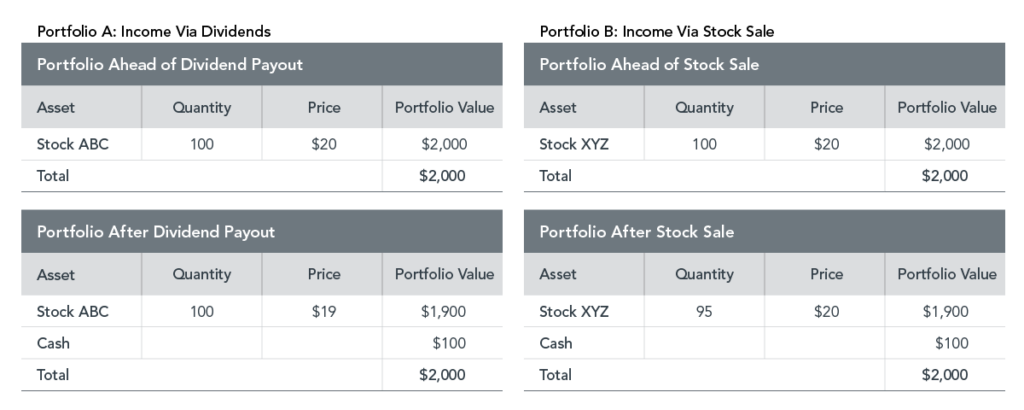Income, One Way or Another: Comparing Two Methods of Income Generation

Capital Preservation and Flexibility
One often overlooked consequence of dividend distributions is their impact on stock value. When a company pays dividends to shareholders, the stock price typically drops by the amount of the dividend paid. This means that while income is generated through dividends, the value of the stock holdings declines correspondingly. As a result, the overall return on investment may be affected, as less capital is available for value appreciation.
An alternative method for generating income is the strategic sale of shares. This approach offers the advantage of greater flexibility for investors. They have control over the timing and size of their sales, and they are not dependent on a company’s dividend distribution decisions. This way, income can be more predictable and tailored to the investor’s specific needs.
Risk of Dividend Cuts
Dividend payments are not guaranteed and are subject to economic fluctuations. Companies may cut or eliminate their dividends in times of financial difficulty. A prominent example is General Electric, which reduced its dividend to just one cent per share after over 100 years of regular payouts. Vodafone, after decades of stable payments, also had to cut its dividend. Such unforeseen changes can significantly impact expected returns and present unexpected challenges for investors.
Limited Selection of Companies
Another argument against a pure dividend strategy is the limited pool of potential investments. Historically, only about 52% of companies in the US paid dividends on average. An investor who focuses solely on these securities is missing out on nearly half of the market’s available investment opportunities. This can lead to insufficient diversification and increased portfolio risk. A heavy reliance on dividend-paying companies also restricts the flexibility to invest in other high-growth firms that may not pay dividends.
Focusing on Total Return
A common mistake is to look at dividend yield in isolation. However, the total return of an investment comprises both dividend income and capital gains. Companies with a high dividend yield do not necessarily achieve high total returns. There are many firms that, despite low or no dividend payments, generate high returns through price gains. Investors who focus solely on dividend stocks risk overlooking companies with strong growth potential that reinvest their profits instead of distributing them to shareholders.
Trading Costs and Taxes
Dividends are often subject to higher taxation compared to capital gains. While capital gains enjoy tax advantages in many countries, dividends frequently fall under a higher tax bracket. Additionally, there are trading costs associated with regularly reinvesting dividends or selling shares for income, which can erode net returns. These additional costs should not be overlooked when weighing the pros and cons of different strategies.
Conclusion
Dividend stocks and funds certainly offer an attractive way to generate regular income, especially for conservative investors. However, they should not be seen as the ultimate investment strategy. Focusing solely on dividend-heavy securities comes with risks like dividend cuts and limited company selection. Moreover, a high dividend yield does not automatically translate into a high total return, potentially affecting long-term value growth.
It’s essential to consider your strategy within the context of your overall investment goals and risk tolerance. A balanced mix of growth-oriented and dividend-paying companies, combined with flexibility in income generation, often provides better return opportunities.


 Deutsch
Deutsch